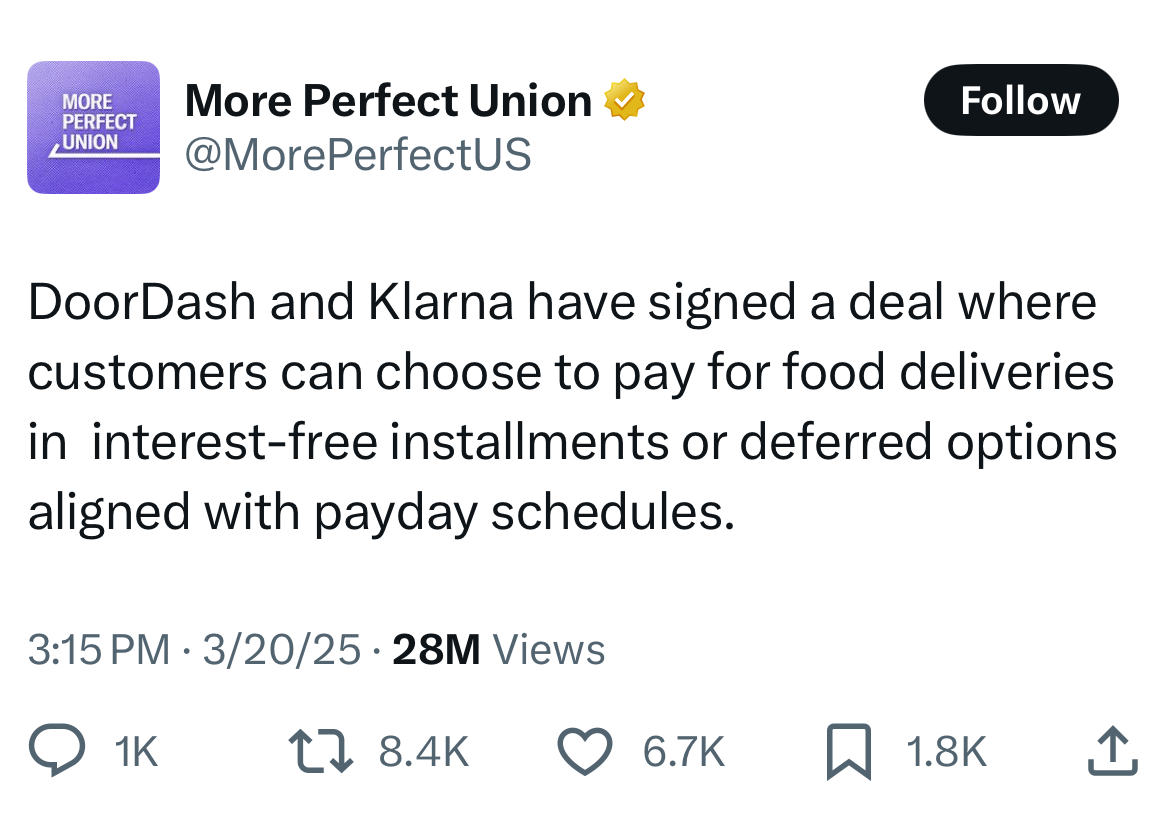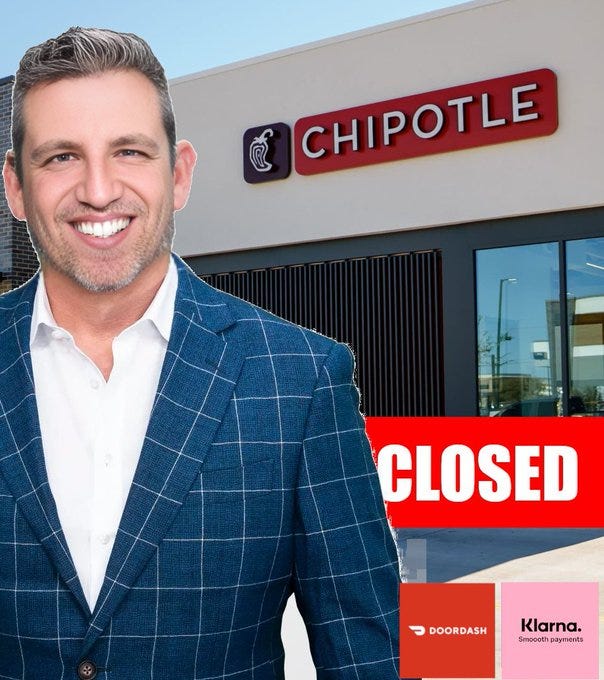“We wanted flying cars, instead we got 140 characters.” Peter Thiel
On March 14, 2025, an artist formerly known as a Buy Now Pay Later (cough… subprime payday lender) got me in a techno-optimistic mood…
“Klarna Group plc (“Klarna”), the AI-powered global payments network and shopping assistant, announced today that it has publicly filed a registration statement on Form F-1 (the “Registration Statement”) with the U.S. Securities and Exchange Commission (the “SEC”) relating to a proposed initial public offering of its ordinary shares.”Klarna is a tech company
Note the words AI, payments network, and shopping assistant. Should have thrown in AI agents and embedded finance into that for full hype! The investment bankers and expensive PR agency working their magic.
In this piece, we go back to how this all began and how it’s going now…
How it started
Klarna made a major pivot a few years ago to expand aggressively in the US funded by VC money. It gave them explosive revenue growth but even more explosive cash burn. As things settled down the latter was not ideal for a 20-year-old company looking to IPO and like many companies ahead of an IPO they started cutting costs to reduce the cash burn.
The point of this post is not to discuss the merits of whether Klarna had the right strategy or how the shares may trade in the months after floating but to reflect on the PR hampster wheel that Western companies go through. It reminds me of when Citigroup told us they were a tech company and then wired billions of dollars to a hedge fund by mistake. I guess real tech companies will wire trillions of dollars by mistake!
No one can blame Klarna CEO Sebastian Siemiatkowski for jumping on the Generative AI bandwagon like pretty much every other CEO out there. A real technology breakthrough that could have material improvements to many businesses.
In February 2024 Klarna announced a breakthrough. Its customer service AI assistant powered by OpenAI was doing the work of 700 employees (25% of customer service headcount), reducing time to solve errands from 11 mins to less than 2 mins and it estimated that this tech adoption would drive a $40 million in profit improvement to Klarna in 2024. Klarna AI customer service press release
But Klarna wasn’t done. Its CEO soon announced huge efficiencies in its marketing team from using AI. For all of you who have used an AI-created image, we can all see how this may be possible. Sebastian Siemiatkowski tweeted that Klarna would save $10 million in 2024 from the efficiency gains that allowed it to reduce the size of its marketing team. In tweets that have since been deleted, he said "We're spending less on photographers, image banks, and marketing agencies," and "Our in-house marketing team is HALF the size it was last year but is producing MORE!"
There was a concerted and aggressive traditional media and social media by Klarna and their supporters to get the narrative legs. Dozens of media pieces and tweet storms by influencer types. The Financial Times wrote in August 2024 “The Swedish fintech has already cut its workforce from 5,000 to 3,800 in the past year. Siemiatkowski told the Financial Times that Klarna could employ as few as 2,000 employees in the coming years as it uses AI in tasks such as customer service and marketing.” Sebastian Siemiatkowski FT
Early in 2024 Gergely Orosz author of The Pragmatic Engineer Substack did some research on the GenAI customer service claims that Klarna was making. He found many of them credible but questioned whether they deserved so much hype:
“Automating L1 (Level 1) support is not that revolutionary and has been done previously on different systems. For example, if you have called phone support and experienced the automated “please press 1 for this, 2 for that” script; well, that was an early example of automating away L1 support. I talked with a software engineer who worked at Citibank in around 2008, when the company decided to eliminate its L1 support system, and automate support via a phone system. Over two years, the team automated 95% of phone support requests and closed a call center of 7,000 people in Mexico.”
The full piece is here and worth a read if you have time: Klarna chatbots
How it’s going
This year Klarna looks to be pivoting back to humans…
Klarna was also busy joining the Silicon Valley hype cycle about how AI is eating SaaS in 2024. It highlighted how it was consolidating its usage of software vendors and even looking to stop using the likes of Salesforce and Workday in 2024. But now it has decided to set the record straight that it was misunderstood. Hopefully, CEO Sebastian Siemiatkowski will get an invitation to do Aloha with Marc Benioff at his Hawaii palace! Turning off salesforce
Back to the IPO hype now…
This Monday Klarna announced a major partnership to become an exclusive provider of buy now, pay later loans (BNPL) to Walmart through the latter’s majority-owned consumer app OnePay. Walmart deal This is a great deal for Klarna no doubt but the PR spin was huge. At one point the incumbent BNPL provider for Walmart Affirm saw a sharp share price fall of more than 10%. But Affirm filed an 8K highlighting that Walmart was only 2% of Affirm’s operating income. Affirm 8K Affirm’s share price has recovered all of its losses and is now flat for the week.
This brings me to yesterday’s Doordash partnership which got the Klarna brand out on social media.
I can’t wait to order my Taco Bell or Nandos in 4 installments!
I wrote about working on IPOs of MBS securitization vehicles during the Global Financial Crisis a few months ago but will we get Doordash securitizations with diversification across prime Gordon Ramsey and Nobu Doordash loans, subprime KFC and Burger King and non-conforming Chipotle. (I am sure readers can think of better examples for the non-conforming one but was thinking of global brands).
Is there an investment banking structuring wizard somewhere already dreaming something up?
The memes were strong on the Doordash theme…








